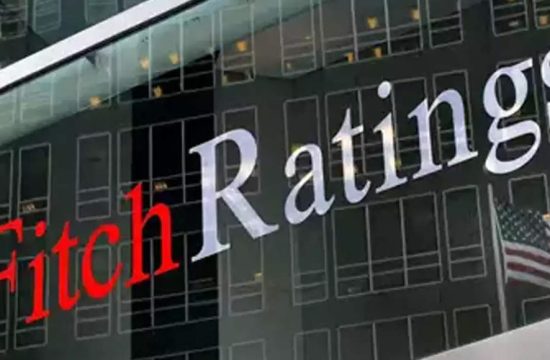
The Reserve Bank’s decision to enhance liquidity into the system through long-term repo operations will ease the borrowing cost for NBFCs and relaxation in loan to value guideline will help revive the economy, the industry said on Friday.
The non-banking financial companies (NBFCs) said the decision to keep the key repo rate — at which the RBI lends short term money to banks — unchanged was on expected lines and in consideration with keeping the inflation target while supporting growth.
RBI Governor Shaktikanta Das, unveiling the bi-monthly monetary policy review, said the six-member Monetary Policy Committee (MPC) voted unanimously to retain repo at 4 per cent while keeping its policy stance accommodative and suggested more measures going ahead to support the economy.
Under the targeted long-term repo operations (TLTROs) measures, the Reserve Bank of India will conduct on-tap TLTRO with tenors of up to three years for a total amount of up to Rs 1 lakh crore at a floating rate linked to the policy repo rate.
“RBI’s status quo on rates was along expected lines but the MPC clearly delivered accommodative moves via non-interest tools. New measures such as on-tap TLTRO of Rs 1 lakh crore, among others will reduce the cost of borrowing for NBFCs and further ease access to liquidity for industry,” said George Alexander Muthoot, MD, Muthoot Finance.
The RBI Governor said the liquidity availed by banks under this facility has to be deployed in corporate bonds, commercial papers, and non-convertible debentures issued by entities in specific sectors over and above the outstanding level of their investments in such instruments as on September 30, 2020.
The liquidity availed under the scheme can also be used to extend bank loans to these sectors, Das added.
Besides, in order to give a fillip to real estate sector, the RBI decided to rationalise the risk weights and link them to LTV (loan to value) ratios for all new housing loans sanctioned up to March 31, 2022, keeping in view the role of real estate sector in generating employment and economic activity.
Rationalising the risk weighting of all new home loans will see the risk of new loans to be linked only to the LTV ratio. Under the extant regulations, differential risk weights are applicable to individual housing loans, based on the size of the loan as well as the loan-to-value ratio.
Muthoot said it is a welcome move that reflects the central bank’s focus on catalysing credit flow and reviving the economy.
“The focus has been on easing financial conditions, keeping liquidity very comfortable in the system and reducing the cost of money through on-tap Rs 1 lakh crore TLTROs and OMOs in state development loans,” said Umesh Revankar, MD and CEO, Shriram Transport Finance.
The sectors like FMCG, agriculture, autos and warehousing, among others, have been more resilient than others in Q2 and this augurs well for the transport industry that ensures last-mile connectivity.
The RBI’s policy measures will have a positive impact for those engaged in last-mile lending, as the rural and semi-urban economy is continuing to show strong recovery, he added.
Hardayal Prasad, MD and CEO of PNB Housing Finance, said rationalising the risk weights for all new housing loans till March 2022 will give the much-needed impetus for the housing sector.
“At the same time, home loans will become accessible and competitive for customers. This move by the central bank addresses the urgency required to boost the real estate sector in the country. This will also lead to the desired recovery of the construction sector, which has a very important role to play in creating employment and growth,” Prasad said.
Kinara Capital, which provides loans without property collateral to small businesses, said the LTRO on tap for banks to be given to specified sectors is a good move but remains to be seen what the eligible sectors are under this scheme.
“Previously, LTRO/TLTRO funds did not flow down to the lower-rated NBFCs…Specific and clear guidelines on eligibility and a separate carve-out for last-mile MSME-focused NBFCs will be the fastest way to economic recovery,” said Aiswarya Ravi, CFO, Kinara Capital.
Paisabazaar.com CEO Naveen Kukreja expects rationalisation of risk weights for individual housing loans with LTV should help improve credit flow and hopefully bring down lending rates in high-value housing loan segment.
The RBI also reviewed the co-origination model for banks and NBFCs by allowing all the non-banking financial companies, including the Housing Finance Companies (HFCs), for lending to priority sector.
The regulator said it will allow greater operational flexibility to the lending institutions.
This co-lending model is expected to leverage the comparative advantages of banks and NBFCs in a collaborative effort, and improve the flow of credit to the unserved and under-served sectors of the economy, the RBI said.
Allowing co-origination of loans to all NBFCs and HFCs for priority sector lending should help banks and NBFCs supplement each other’s strengths for improving credit flow to the under-served borrower segments, said the Paisabazaar.com CEO.
“While banks have a regulatory obligation to meet its priority sector lending targets, the NBFCs have played an important role in serving this segment. This would help transfer some liquidity from the banking system to the NBFCs and help improve overall credit flow,” Kukreja said.






